|
|
|
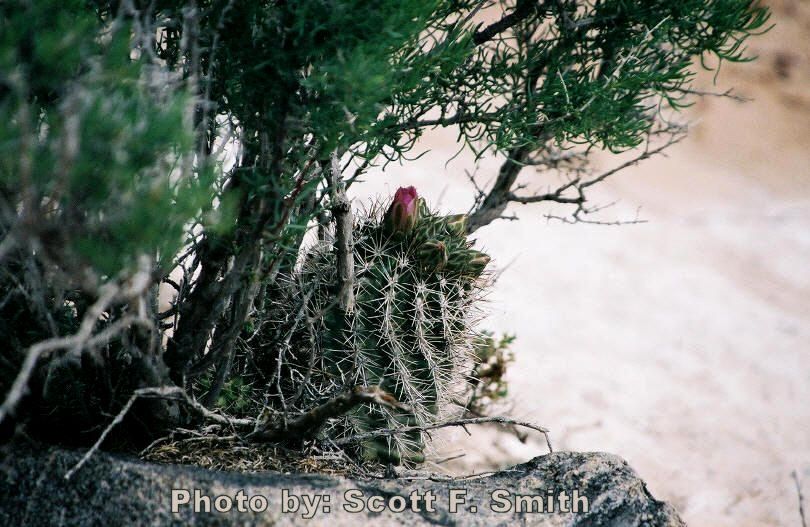
S. parviflorus under a junipers tree |
|
Etymology:
The
generic name
"Sclerocactus" derives from the Greek word “sclero”
meaning "hard ", "cruel”
referring
to the
hard seed tegument or to the
formidable spines,
and the word “cactus” (an old genus name)
( The
genus name implies:
"hard cactus").
The
specific name "parviflorus"
derives the Latin word
“parvus”
that
means "small"
and from
“florus” the past participle
of
the Latin verb “floreo"
meaning
"to
flower"
Named in the 30s by Clover and
Jotter,
S. parviflorus is
the
translation of the Latin, "small-flowered", a misnomer, whereas this
species has small flowers only in relationship to the
larger
bloomer of the genus:
S. polyancistrus |
|
|
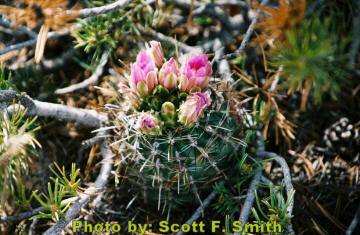 |
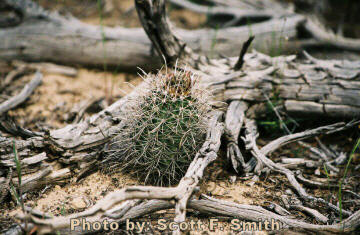 |
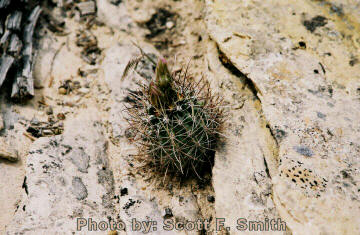 |
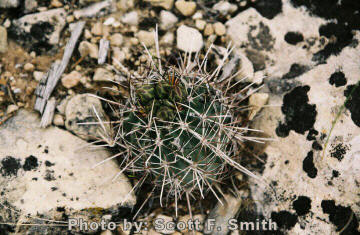 |
|
Photo of conspecific taxa, varieties, forms and
cultivars of Sclerocactus parviflorus .
|
|


Advertising
|
|
|
|
|
Family:
Cactaceae (Cactus
Family) |
Scientific name:
Sclerocactus parviflorus
Clover & Jotter
Published in:
Bulletin of the
Torrey Botanical Club 68: 419,
fig. 8.
1941.
Conservation status: Listed in
CITES appendix 2.
Common Name: Devil’s-claw cactus, small flower fishhook cactus.
-
Sclerocactus parviflorus
Clover & Jotter 1941
-
Echinocactus parviflorus
(Clover & Jotter) L.D.Benson 1950 in: Cacti of
Arizona, ed. 2, 102, 1950.
-
Ferocactus parviflorus
(Clover & Jotter) N.P.Taylor 1979
-
Pediocactus parviflorus
(Clover & Jotter) Halda 1998.
|
|
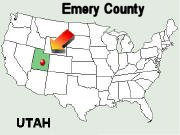 Origin:
S. parviflorus is the most widely distributed
species among the genus, it ranges from Arizona to Colorado, New Mexico
and Utah.
Habitat: distributed mostly along
the great river system above the 1000 m up to 2100m over sea level, live
on many type of soil, such Sandy, gravelly, or clay hills, mesas, and
washes, desert grasslands, red sand under sparse junipers trees, on
cracked clay plains etc. Origin:
S. parviflorus is the most widely distributed
species among the genus, it ranges from Arizona to Colorado, New Mexico
and Utah.
Habitat: distributed mostly along
the great river system above the 1000 m up to 2100m over sea level, live
on many type of soil, such Sandy, gravelly, or clay hills, mesas, and
washes, desert grasslands, red sand under sparse junipers trees, on
cracked clay plains etc.
|
|
|
|
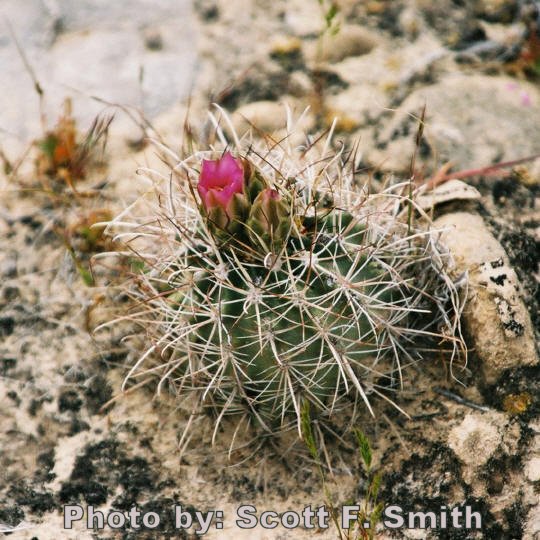 |
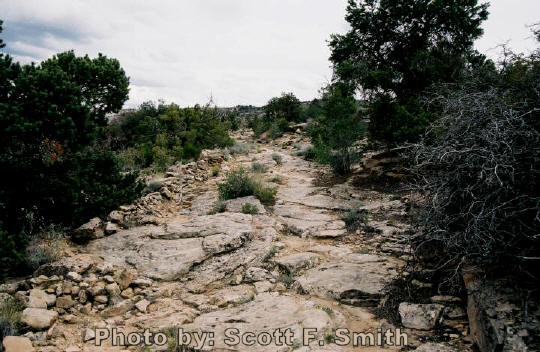 |
|